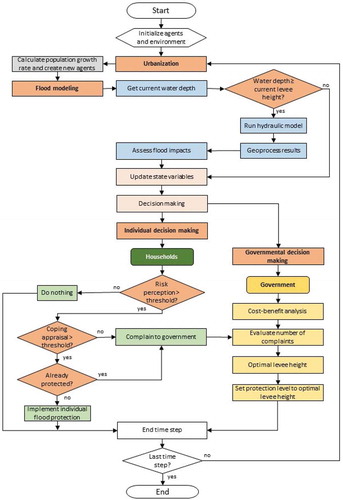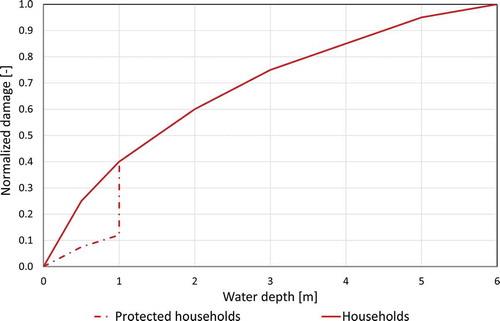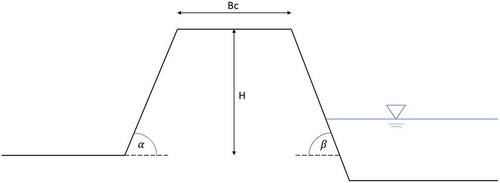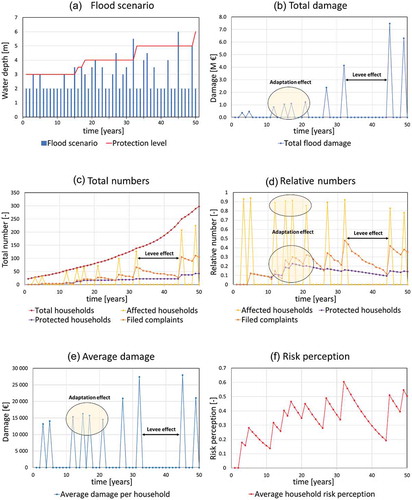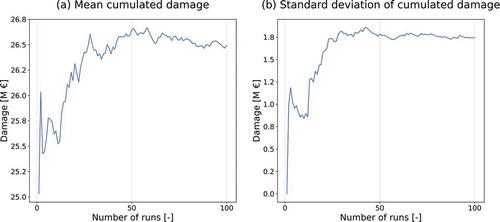Figures & data
Figure 4. Map of the synthetic case study set-up with the location of the inflow point, levee system, urban centre and households.
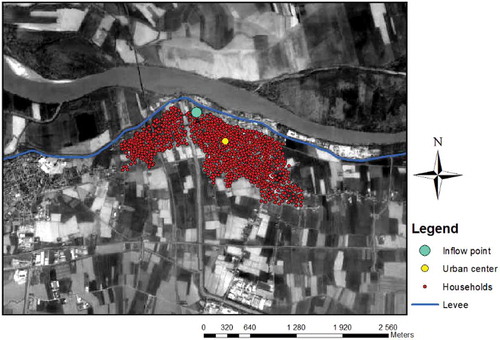
Table 1. Relevant model parameters.
Figure 6. Agent locations in time steps 32 and 44. Protected households are marked by a thicker (blue) outline.
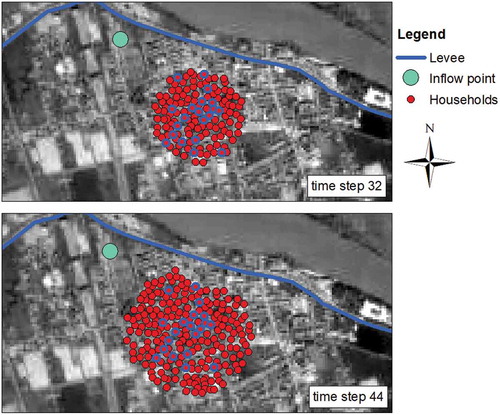
Figure 7. Cost–benefit analyses at four specific time steps during the simulation window. EAD: the expected annual flood damage, ACC: the annual construction cost, and TC: the total cost.
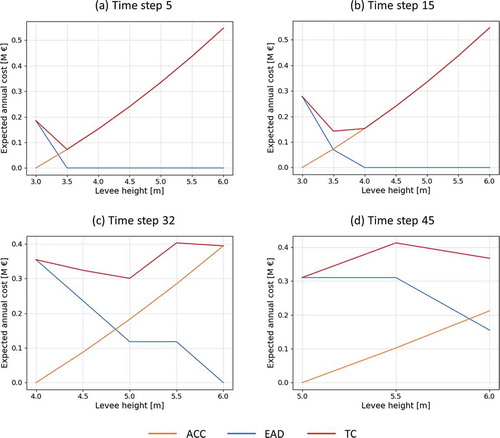
Table 2. Results of sensitivity analysis and relative contribution of model parameters.

